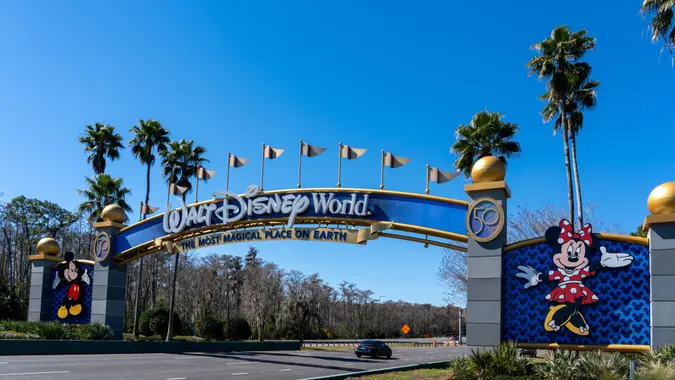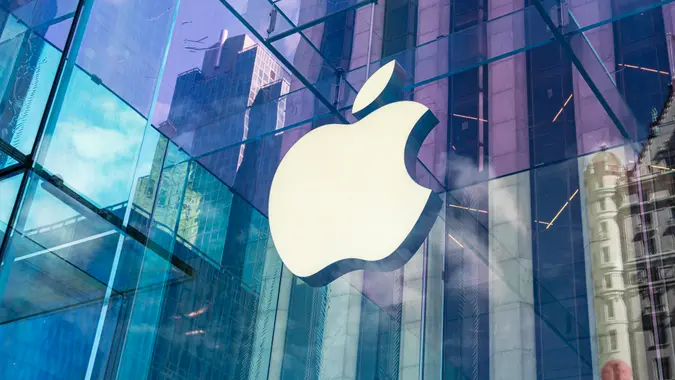How Rich You Would Be If You Invested in Netflix Stock Instead of a Subscription

Commitment to Our Readers
GOBankingRates' editorial team is committed to bringing you unbiased reviews and information. We use data-driven methodologies to evaluate financial products and services - our reviews and ratings are not influenced by advertisers. You can read more about our editorial guidelines and our products and services review methodology.

20 Years
Helping You Live Richer

Reviewed
by Experts

Trusted by
Millions of Readers
When Netflix launched the country’s first web-based video-on-demand service in 2007, little did it know that terms like “bingeing” and “cord-cutting” would soon become part of the American lexicon and help couch potatoes everywhere grow more and more eyes. The prices seem reasonable, and the content seems endless, so what is the harm?
Well, what if those eyes had been on their brokerage accounts instead of their increasingly enormous flat-screen TVs? Here’s a look at where your net worth might be today if you had used the money spent on your Netflix subscription to invest in Netflix stock instead.
How Much, Exactly, Have I Spent Watching Netflix?
Netflix introduced America to the concept of streaming video on demand in 2007, but it required members to subscribe to its traditional DVD-by-mail service to participate. On top of that, members paid according to how much content they consumed. For example, $18 a month bought you 18 hours of streaming.
What’s almost lost to history is that Blockbuster nearly won the rental wars with its Total Access program in 2006, which let subscribers receive DVDs in the mail and return them to the chain’s physical locations. But in 2008, Netflix fought its way off the ropes and brought streaming into the modern era with a consistent and streamlined subscription policy that made bingeing possible.
That’s where this storyline begins, presuming a standard-tier subscription level the entire time and rounding up Netflix’s prices by one penny for the sake of round numbers.
2008 to 2010: $9
In 2008, Netflix launched unlimited streaming of its 90,000-title library for $9 per month, where it would remain through 2010.
- 36 months at $9 per month: $324
2011 to 2013: $8
In 2011, Netflix lowered the price of its standard package to $8, but it made up for it by jacking up the cost of its DVDs, which still accounted for many of its titles. The result was nearly universal customer outrage and the 2011 stock price crash that Butler described. On Oct. 25, 2011, Netflix suffered its biggest single-day drop when shares fell 34.9% after the company reported a net loss of 800,000 subscribers.
- 36 months at $8 per month: $288
April 2014 to October 2015: $9
In the spring of 2014, Netflix continued tinkering with its subscription tiers. While SD consumers could stay on for $8, those who wanted HD streaming had to spend another buck.
- 18 months at $9 per month: $162
October 2015 to October 2017: $10
Netflix keeps its basic package at $8 while increasing its standard package by another dollar, where it stays for two years.
- 24 months at $10 per month: $240
October 2017 to January 2019: $11
Netflix continues to phase all tiers to higher prices, with the cost of a standard subscription increasing by a dollar yet again.
- 14 months at $11 per month: $154
January 2019 to October 2020: $13
Instead of continuing its phase-in, Netflix simultaneously hikes prices across all tiers for the first time in company history. This time, standard subscribers get a $2 increase.
- 21 months at $13 per month: $273
October 2020 to January 2022: $14
With the pandemic making streaming more of a necessity than an amenity, Netflix sees room for another increase.
- 15 months at $14 per month: $210
January 2022 to January 2025: $15.50
At the start of 2022, Netflix added $1.50 to its standard subscription price where it remained until the beginning of this year. However, though the basic subscription (with ads) is now $7.99 in 2025, the data used will stop after the full year for the sake of this example.
- 36 months at $15.50 per month: $558
And If I Had Invested All That Instead of Streaming It?
If you’ve been a Netflix subscriber since 2008 when the platform first allowed unlimited streaming, you would have spent about $2,209 to binge “Squid Game,” “Stranger Things,” “Love is Blind” and the rest of its hit shows between then and now.
In 2008, Netflix (NFLX) averaged about $4.10 per share, although that number accounts for two stock splits, a 2:1 before and a 7:1 later.
Therefore, the $2,209 you spent for a 17-year movie night could have bought you just over 538 shares of company stock. Today, Netflix is trading at around $1,194 according to MarketWatch, which means you’d have a whopping $642,372 if you had invested in Netflix instead of watching it.
It really makes you think, doesn’t it?
 Written by
Written by  Edited by
Edited by 
























